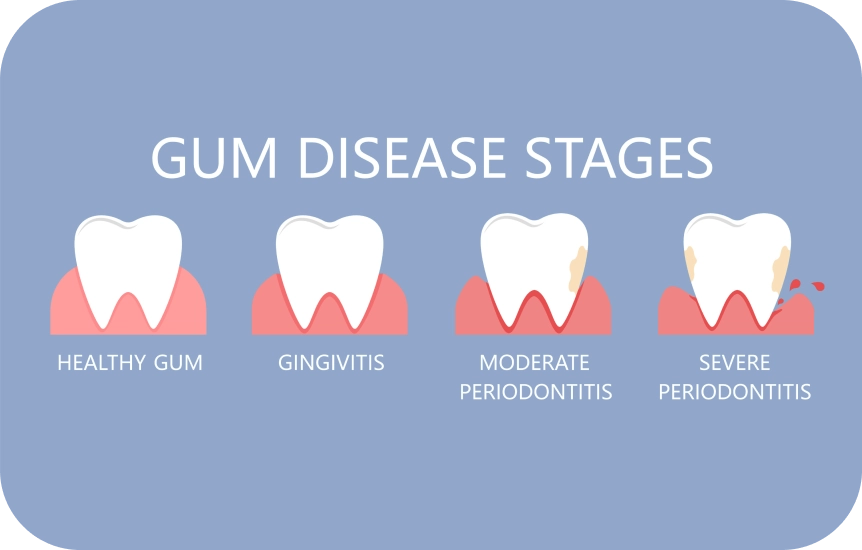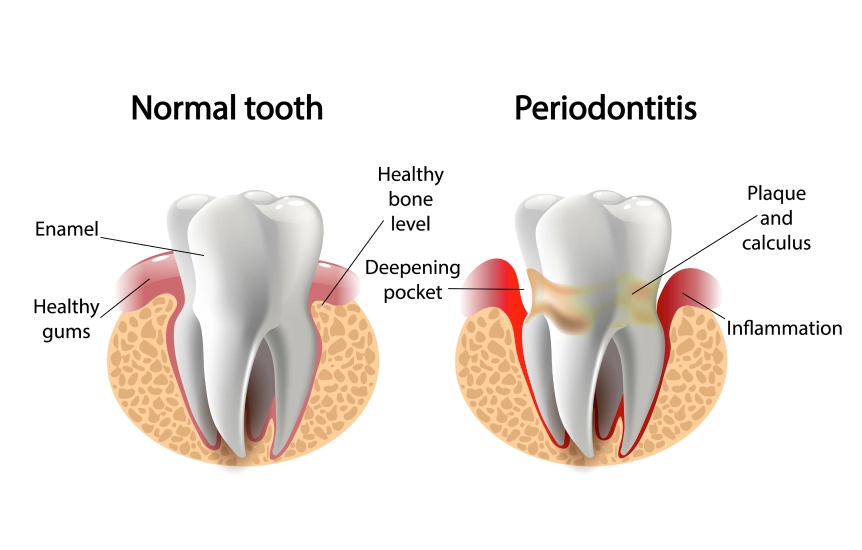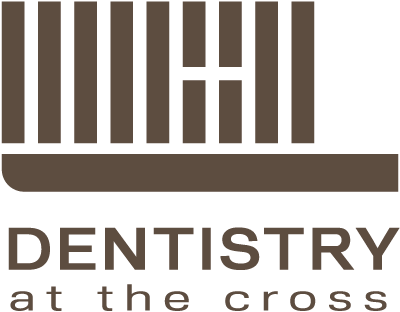Gum disease is common. It affects around 30% of Aussie adults and is a leading cause of tooth loss. It can also impact your general health. Severe gum disease has been linked to both heart disease and diabetes. There’s good news though. If detected and treated early, you can get your oral health back on track.
Here’s a look at the signs of gum disease to watch for. Plus, find out who’s most at risk and what you can do to prevent gum disease.
2 .What are the stages of gum disease?
What is gum disease?
First things first, you may be asking yourself “what is gum disease, exactly?” That’s a great question. Knowing what gum disease is can help you to prevent it.
It all starts with a build-up of plaque on your teeth. (You know that icky, sticky film you can sometimes feel with your tongue?) If plaque isn’t removed, it hardens and turns into tartar. This acts as a home and protective shield for bacteria. Tartar also causes the gums to become irritated, inflamed, and can lead to infection.
Infection can spread to the surrounding bone and soft tissue. Chewing can become painful and, in more serious cases, teeth can become loose or need removing.

It all starts with a build-up of plaque on your teeth. If it isn’t removed, it hardens and turns into tartar. Tartar acts as a home and protective shield for bacteria and causes the gums to become irritated, inflamed, which can lead to infection.
What are the stages of gum disease?
There are two types of gum disease:
- Gingivitis
- Periodontitis
Gingivitis
Studies show that gingivitis is common, affecting almost 29% of adults in Australia. Gingivitis is a mild, early-stage gum disease. The term ‘gingivitis’ literally means ‘inflammation of the gums’. That may be the first thing you notice; your gums look red or puffy, compared to normal. Or you may see blood when brushing and flossing. Gingivitis can also cause bad breath (halitosis). The best news is that it is curable, leaving no lasting damage. However, if you ignore the symptoms of gum disease, it can lead to periodontitis or a dental emergency.
Periodontitis
Periodontitis (AKA periodontal disease) is a more severe type of gum disease. It is a bacterial infection of the tissue that holds your teeth in position. It can result in permanent damage to your gum tissue and the soft tissue supporting your teeth, as well as bone loss. Eventually, it can lead to tooth loss. Let’s look at the three stages of this advanced form of gum disease.
Stage 1 periodontitis (early)
In its early stage, inflammation damages the fibres that connect the roots of the teeth to the tooth socket. For you, it’s impossible to know that your gingivitis has progressed to early-stage periodontitis. You may have a little more inflammation, but that’s about it.
Stage 2 periodontitis (moderate)
Without treatment, the disease will progress to moderate periodontal disease. The only difference between stage one and two is that there is further damage to the fibres (periodontal ligaments). The damage is permanent and will be noticeable to your Potts Point dentist.
Stage 3 periodontitis (advanced)
In advanced periodontal disease your gums pull away (recede) from your teeth. You may notice that your teeth appear longer, as a result. Damage to the gums, bone and connective tissues may cause your teeth to shift or become loose. Maybe your bite is misaligned, or chewing has become painful. At this stage, treatment is paramount to help save your teeth. Know that in advanced-stage periodontitis it may not be possible to save all your teeth. Dentures or dental implants may be needed.

In advanced periodontal disease your gums pull away (recede) from your teeth. Damage to the gums, bone and connective tissues may cause your teeth to shift or become loose.
Gum disease symptoms
The signs of gum disease may depend at which stage you’re at. Common symptoms include:
- Bleeding gums, especially when brushing or flossing
- Gum redness and inflammation
- Bad breath
- Receding gums
- Tooth sensitivity
- Pain when biting or chewing
- Shifting or loose teeth
- Tooth loss
Who’s at risk?
Most people have some gingivitis in their mouth. Plaque is constantly forming and reforming. This is why it’s so important to brush and floss teeth regularly. It’s also why people with poor oral hygiene are at high risk of gum disease.

Smoking is the biggest risk factor for periodontitis.
When it comes to what causes gum disease, other risk factors to consider include:
- Smoking (this is actually the biggest risk factor for periodontitis)
- Diabetes — because of increased risk of infection
- Family history — genetics make some people more susceptible to the bacteria in plaque than others
- Hormonal changes in women — for example during pregnancy and menopause
- Obesity
- Poor nutrition
- Health conditions — such as cardiovascular disease and rheumatoid arthritis
- Medications — can reduce saliva production
Gum disease treatment
Treatment for gum disease depends on the person and the stage of disease. Essentially, the aim of treatment is to remove plaque and bacteria from the teeth and gums. Here’s how it’s done.
Professional cleaning
Deep cleaning (AKA scaling and root planing) is a non-surgical treatment for gum disease. It’s very different from a regular professional clean, which focuses on the surfaces ‘above’ the gum line. Deep cleaning involves removing bacterial plaque and tartar that have formed ‘below’ the gum line and on the teeth and root surfaces.
Before the process begins, you’ll be given local anaesthetic. Your dentist will remove bacteria and tartar using special instruments. Tartar can also build-up on fillings that have become rough. In this case, the filling (as well as some of the tooth roots) may need to be reshaped or smoothed.
Surgery
In cases of advanced gum disease, surgery may be necessary. Gum disease surgery is a common procedure. A small cut is made in the gum and a section of the tissue is folded back. Infected gum tissue is removed. Any plaque or bacteria that’s living below the gum line is cleaned away. Following treatment, the gums are sutured back using dissolvable stitches.
In both instances, your dentist should provide advice and instructions on how best to clean your teeth at home.
How to prevent gum disease
The best way to prevent gum disease is by regularly brushing your teeth and flossing. While you may think you know how to properly clean your teeth, this isn’t always the case. Not only is plaque difficult to see, but some areas of the teeth are super hard to reach. Here are a few tips for good oral care.

The best way to prevent gum disease is by regularly brushing your teeth and flossing. While you may think you know how to properly clean your teeth, this isn’t always the case. Not only is plaque difficult to see, but some areas of the teeth are super hard to reach.
- Brush teeth twice a day — don’t forget to brush along the gum line
- Use a soft, small-head toothbrush (or an electric toothbrush) and fluoride toothpaste
- Using floss daily or interdental brushes removes plaque from in between your teeth and close to your gum line
- Care for dentures, dental implants, and fillings in the same way you would your natural teeth
- Drink water or chew sugar-free chewing gum after eating to get rid of bacteria and debris
- Quit smoking
- Maintain good overall health
- Avoid sugary foods and drinks
Finally, don’t forget to visit your dentist regularly for check-ups and professional cleaning. Ready to book your appointment?







